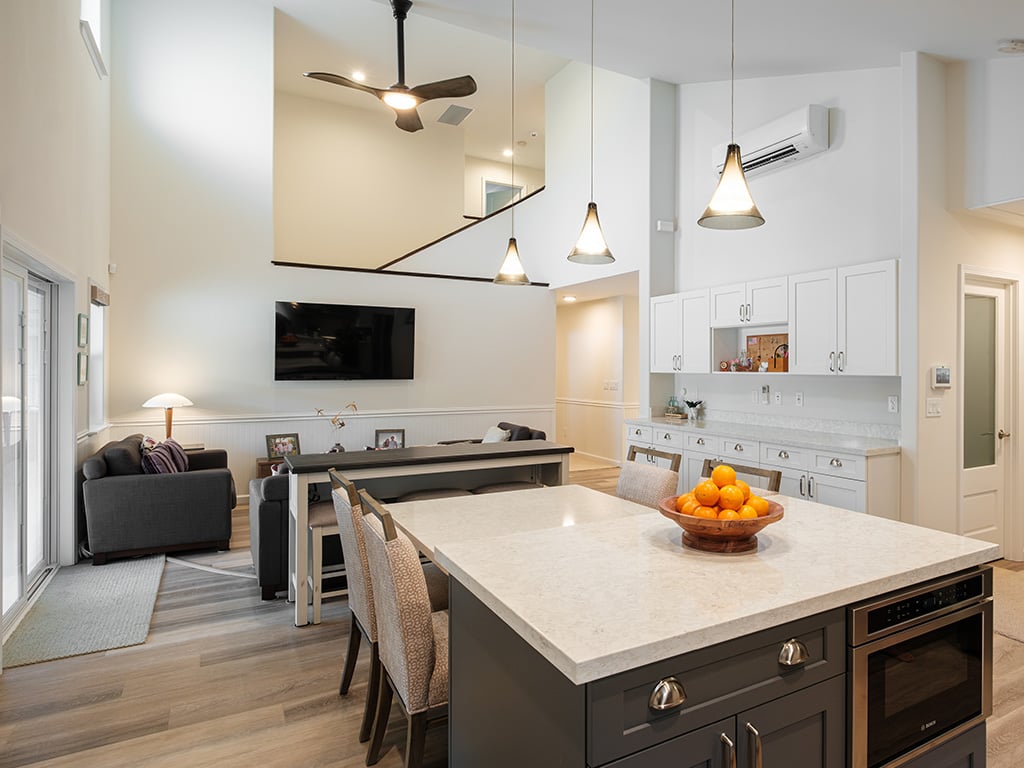Weighing the Benefits of Aging in Place
Graham Builders offers insight into the physical, financial, and emotional advantages of aging in place at home.

In Hawaii, “home” is often synonymous with “family,” and for many local folks, living in a multigenerational residence with kupuna is the best option when it comes to living costs and caring for aging relatives. While assisted living facilities can provide care and accommodations, addressing the needs of our elders with a certified aging in place specialist and making modifications at home is a popular option.
“CAPS professionals are trained and certified by the National Association of Home Builders to understand the unique needs and challenges of older adults and individuals with disabilities,” explains Ryan Graham, vice president at Graham Builders. “Consulting with a CAPS professional can greatly benefit individuals who want to age in place by ensuring that their home is designed to meet their evolving needs and support their independence and safety.”

Cost can be the biggest concern when deciding what to do. “People sometimes mistakenly assume that assisted living is more affordable than renovating a home for aging in place due to a few common misconceptions and factors,” shares Graham. “It’s essential for families to carefully consider both the short-term and long-term financial implications of their choices.”
He and Evan Fujimoto, Graham Builders’ president, are CAPS certified and can offer suggestions for customized health and safety modifications for your family that can also add value to your home. Here, Graham provides valuable insights on aging-in-place home remodels versus assisted living.

1. Initial cost comparison
When comparing the costs of home renovations for aging in place to the monthly fees associated with assisted living, the latter may initially seem like the more affordable option. This is because renovation costs are typically incurred upfront, while the costs of assisted living are spread out over time.
2. Hidden costs of assisted living
Assisted living facilities charge monthly fees that cover various services, including housing, meals, housekeeping, and personal care assistance. These costs can add up quickly, and families may underestimate the total expenses. Some assisted living facilities may also tack on extra fees for more extensive services and needs.

3. Home equity and resale value
Homeowners should consider the potential return on investment from aging-in-place home modifications. In addition to the physical and emotional value of keeping kupuna at home, with family in a familiar environment, aging-in-place modifications can actually increase the resale value of your home.
4. Duration of care needs
How long will your kupuna need care? Some older adults may only need assistance for a few years; others might need it for decades. Don’t underestimate the long-term costs of assisted living when comparing them to one-time renovation expenses.

5. Quality of life and personal preferences
The decision to age in place or move to an assisted living facility can be influenced by personal preferences and the quality of life an older adult wishes to maintain. Some individuals may prioritize staying in their own home — even if it requires significant renovations — because it allows for greater independence and a sense of control.
Estimated monthly median costs in Honolulu for assisted living range between $1,600 and $15,000 — and that’s not including the costs of health care visits and medications. “The decision between aging-in-place renovations and assisted living should be based on a careful assessment of the older adult’s physical and cognitive needs, safety considerations, social and emotional well-being, financial situation, and personal preferences,” explains Graham.

When deciding on the best living option for kupuna, Graham encourages families to evaluate these additional key factors: the need for round-the-clock medical care or assistance, safety concerns, social isolation, lack of access to necessary services, and caregiver burnout.
For expert tips on making your home comfortable, safe and accessible as you age, check out this story on What You Need to Know about aging in place or head to Graham Builders’ website to review some of the company’s beautiful aging-in-place projects.






